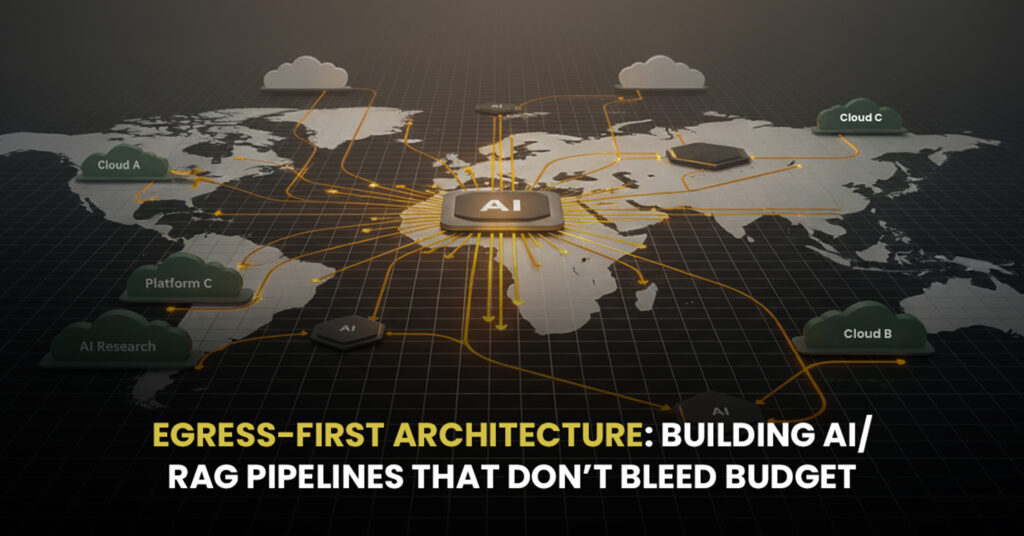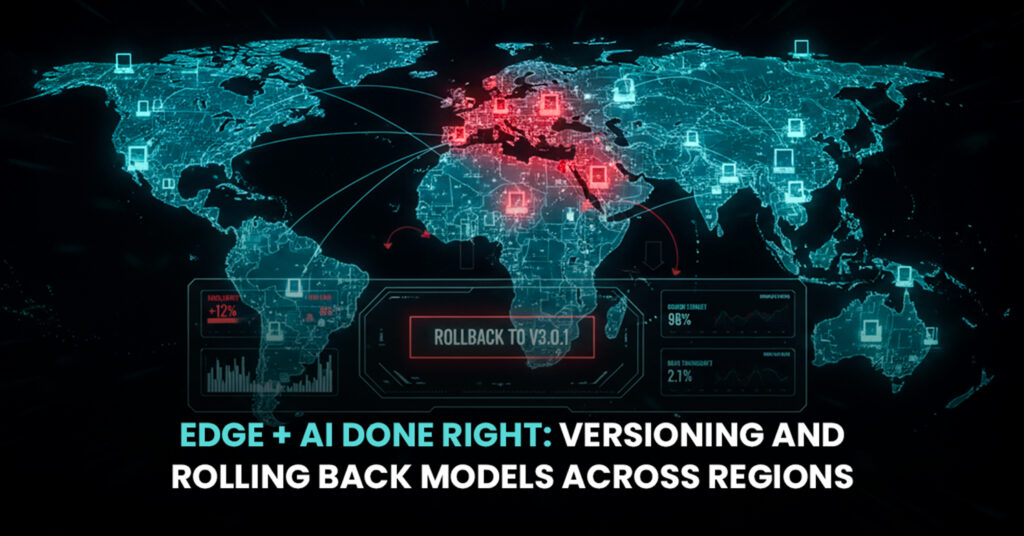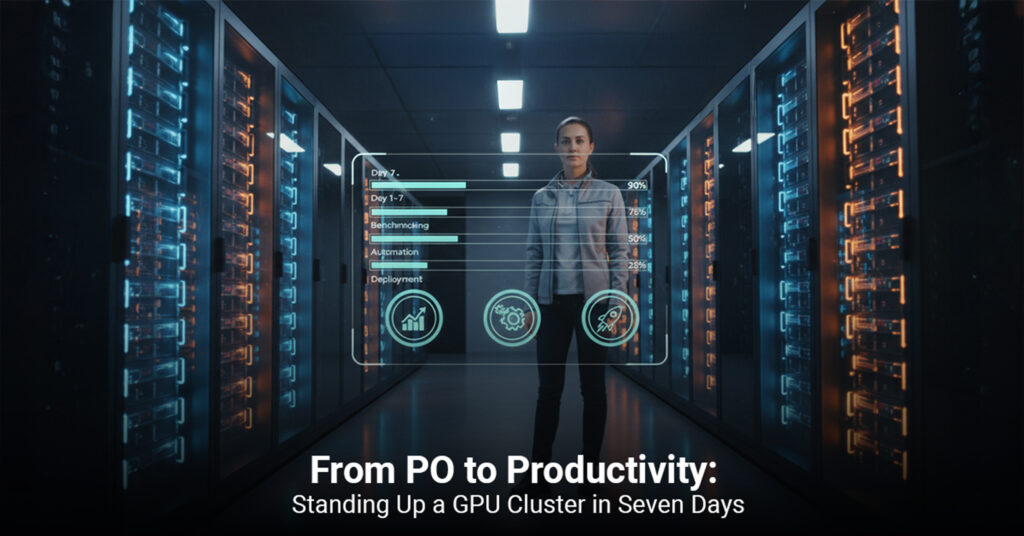Remember that episode of “The Jetsons” where everything in George’s house worked perfectly without him having to think about it? The coffee brewed itself, the car drove itself, and somehow, miraculously, nothing ever broke down. Well, fast-forward to 2025, and we’re basically living in that future at least when it comes to database management.
Except instead of Rosie the Robot taking care of your housework, you’ve got Oracle Autonomous Database taking care of your enterprise infrastructure. And unlike most sci-fi promises that turned out to be overhyped (where’s my flying car?), this one actually delivers.
But here’s the thing: while everyone’s talking about “autonomous” and “self-healing” databases, most people still don’t really understand what that means in practice. Is it just fancy marketing speak for “slightly better automation”? Or are we genuinely looking at a fundamental shift in how enterprises manage their most critical systems?
Spoiler alert: it’s the latter, and CloudServ.ai is helping organizations make this transition in ways that would make George Jetson jealous.
The 3 AM Wake-Up Call That Changed Everything
Let’s start with a scenario that’s probably given you nightmares: It’s 3:17 AM on a Tuesday. Your phone buzzes with that dreaded alert database performance has tanked, and your primary application is crawling. In the old world, this meant scrambling to wake up your DBA, troubleshooting for hours, and probably discovering the issue was something that could have been prevented with better monitoring.
Now imagine the same scenario, but different ending: the database detects the performance degradation, analyzes the root cause (turns out a marketing campaign just went viral and traffic spiked 400%), automatically allocates additional resources, optimizes the most expensive queries, and sends you a friendly morning summary of how it handled everything while you slept.
That’s not science fiction. That’s Tuesday night with Oracle Autonomous Database managed by CloudServ.ai.
Why Traditional Database Management is Like Driving a Car Blindfolded
Here’s the uncomfortable truth about traditional database management: we’ve been doing it all wrong for decades.
Think about it we hire expensive database administrators (when we can find them), ask them to monitor dozens of systems simultaneously, and then act surprised when human error causes outages. It’s like asking someone to drive cross-country while blindfolded and then wondering why they occasionally hit potholes.
The Numbers Don’t Lie: The average enterprise experiences 14 hours of database downtime per year, with each hour costing anywhere from $100,000 to $5 million depending on the industry. Most of these outages? Completely preventable with better automation.
The DBA Shortage Crisis: There are roughly 300,000 open database administrator positions globally, but only about 180,000 qualified professionals. Basic supply and demand means DBA salaries are skyrocketing while availability plummets.
The 24/7 Problem: Databases don’t sleep, but humans do. Even the best DBA can’t provide round-the-clock optimization, which means your database is essentially running on autopilot for 16+ hours a day anyway just not a very intelligent autopilot.
This is where the autonomous revolution stops being a nice-to-have and starts being a business necessity.
The Three Superpowers of Autonomous Databases
Oracle Autonomous Database isn’t just “automated database management with extra steps.” It’s built around three core capabilities that fundamentally change how enterprise infrastructure operates:
Self-Driving: The Invisible Database Administrator
Imagine having a DBA who never sleeps, never makes mistakes, and can process thousands of performance metrics simultaneously. The self-driving capability handles everything from initial provisioning to ongoing scaling decisions.
In Practice: When your e-commerce site gets featured on a major blog and traffic increases 10x overnight, the system doesn’t panic or send alerts. It quietly provisions additional compute resources, adjusts memory allocation, and optimizes query execution all while maintaining perfect performance.
Self-Securing: Your Paranoid (But Effective) Security Guard
Traditional database security is like having a security guard who checks IDs once when people enter the building and then assumes everyone inside is trustworthy. Autonomous databases are more like having a paranoid security expert who continuously monitors every single interaction and updates security protocols in real-time.
In Practice: When new security threats emerge (and they emerge daily), your database automatically downloads and applies security patches without requiring downtime or manual intervention. It’s also constantly monitoring for unusual access patterns and can block potential breaches before they become actual problems.
Self-Repairing: The Database That Fixes Itself
This is where things get really impressive. Self-repairing capabilities mean the database doesn’t just detect problems it fixes them automatically. Hardware failures, performance degradation, even complex query optimization issues get resolved without human intervention.
In Practice: A storage drive fails at 2 AM? The database automatically fails over to backup storage, begins rebuilding redundancy, and orders replacement hardware. You find out about it in your morning report, after everything’s already been fixed.
CloudServ.ai: Where Autonomous Meets Expertise
Now, you might be thinking, “This sounds great, but Oracle’s autonomous features are available to everyone. What makes CloudServ.ai different?”
Great question, and the answer is the difference between owning a Formula 1 car and being a Formula 1 driver.
Oracle Certified Mastery: CloudServ.ai’s team includes Oracle Certified Masters who understand not just how autonomous databases work, but how to optimize them for specific use cases. They know which knobs to turn (yes, there are still knobs to turn) and when to let the system handle things automatically versus when to intervene.
Industry-Specific Intelligence: Autonomous databases are smart, but they’re not mind readers. CloudServ.ai creates custom optimization profiles based on industry-specific workload patterns. A healthcare database has different needs than a financial trading platform, and our implementations reflect those differences.
The Human-AI Partnership: This isn’t about replacing human expertise with artificial intelligence it’s about amplifying human expertise with AI capabilities. CloudServ.ai’s 24/7 monitoring combines machine learning insights with human judgment to create something more powerful than either could achieve alone.
The Autonomous Database in Your Daily Life: What Self-Healing Actually Looks Like
Instead of abstract promises, let’s walk through what autonomous database management actually means for your day-to-day operations across different scenarios:
Monday Morning Miracle: The Traffic Spike That Didn’t Break Everything
Picture this: Your marketing team just launched a campaign that’s performing way better than expected. Website traffic jumps from normal levels to Black Friday-level chaos in under an hour.
Traditional Response: Panic. Emergency calls. Manual resource allocation. Maybe some downtime while you figure things out.
Autonomous Response: The database notices the traffic pattern change within minutes, automatically provisions additional compute resources, optimizes query execution paths for the new load pattern, and scales storage I/O to handle increased data requests. Your marketing team celebrates their success instead of apologizing for breaking the website.
Wednesday Afternoon Security: The Threat That Never Materialized
A new zero-day vulnerability gets announced affecting database systems worldwide. Companies scramble to understand their exposure and plan emergency patching windows.
Traditional Response: Emergency meetings, impact assessments, scheduling weekend maintenance windows, crossing fingers that patches don’t break anything.
Autonomous Response: Your database automatically downloads and applies the security patch during a low-usage period, tests all critical functions, and confirms everything works before fully implementing. You find out about the vulnerability and its resolution in the same email.
Friday Evening Optimization: The Performance Boost You Didn’t Know You Needed
End-of-week reporting typically slows down your entire system as heavy analytical queries compete with regular operations for database resources.
Traditional Response: Users complain about slow performance, IT investigates next week, maybe implements some manual optimizations after thorough testing.
Autonomous Response: The system recognizes the weekly reporting pattern, automatically creates optimized execution plans for common analytical queries, temporarily allocates additional resources for reporting workloads, and even suggests better indexing strategies for frequently accessed data.
The Weekend Non-Event: Hardware Failures That Fix Themselves
A storage controller fails on Saturday night when nobody’s monitoring systems closely.
Traditional Response: Systems slow down or crash, alerts wake up the on-call engineer, emergency vendor calls, possible data recovery procedures.
Autonomous Response: The database detects the hardware failure within seconds, automatically fails over to redundant storage, begins rebuilding data protection, and orders replacement hardware. Monday morning, you get a summary report of the incident and resolution after everything’s already back to normal.
The ROI That Actually Matters
Let’s talk numbers, because autonomous database management isn’t just about cool technology it’s about business impact.
Direct Cost Savings: Most organizations see 60-80% reduction in database administration labor costs. For a typical enterprise, that’s $300,000-$500,000 annually just in salary savings.
Downtime Prevention: The average cost of database downtime ranges from $100,000 to $1 million per hour depending on the industry. Autonomous databases virtually eliminate unplanned downtime, which can save millions annually for larger organizations.
Productivity Multiplication: When IT teams aren’t constantly firefighting database issues, they can focus on strategic initiatives that actually drive business growth. Organizations typically report 25-40% improvement in IT team productivity within the first year.
Hidden Benefits: Improved security (automated patching eliminates security vulnerabilities), better compliance (automated audit trails and reporting), and enhanced scalability (automatic resource optimization) provide additional value that’s harder to quantify but equally important.
Implementation: Your Roadmap to Autonomous Operations
Transitioning to autonomous database management isn’t like flipping a switch it’s more like learning to trust a very intelligent co-pilot.
Phase 1: Assessment and Planning (2-4 weeks) CloudServ.ai evaluates your current database infrastructure, identifies optimization opportunities, and creates a migration plan that minimizes risk while maximizing benefits. This isn’t a generic assessment it’s tailored to your specific workloads and business requirements.
Phase 2: Migration and Optimization (4-8 weeks) The actual migration happens in carefully planned phases with extensive testing at each step. CloudServ.ai’s team ensures zero data loss and minimal disruption to ongoing operations. Most clients are surprised by how smooth this process actually is.
Phase 3: Continuous Improvement (Ongoing) This is where the magic really happens. The autonomous system begins learning your specific workload patterns and optimizing accordingly. CloudServ.ai’s ongoing monitoring ensures the system continues to improve performance over time.
Addressing the Elephant in the Room: Common Concerns
“What if I lose control of my own database?” Autonomous doesn’t mean uncontrollable. You maintain full visibility into all system decisions and can override autonomous actions when necessary. Think of it as having a very smart assistant rather than handing over complete control.
“Is my data actually more secure with automation?” Absolutely. Automated security patches eliminate the window of vulnerability that exists with manual patching. Continuous monitoring catches threats that human administrators might miss. And consistent application of security policies eliminates the human errors that cause most breaches.
“What happens to our database team?” DBA roles evolve rather than disappear. Instead of routine maintenance and firefighting, your team focuses on strategic optimization, business intelligence, and advanced analytics. Most organizations find their database teams become more valuable, not less.
The Future Starts Now
Autonomous database management isn’t some distant future technology it’s available today, and organizations that adopt it early gain significant competitive advantages.
The question isn’t whether autonomous databases will become standard (they will), but whether your organization will be a leader in this transition or a follower trying to catch up.
CloudServ.ai’s Oracle Autonomous Database implementations are helping enterprises transform from reactive infrastructure management to proactive business enablement. The technology exists, the expertise is available, and the business case is compelling.
Ready to explore what self-healing infrastructure could mean for your organization?
CloudServ.ai’s autonomous database specialists can provide a comprehensive assessment of your current infrastructure and demonstrate exactly how autonomous capabilities would impact your specific environment.
Because the future of enterprise infrastructure isn’t just about databases that don’t break it’s about databases that actively make your business better, 24 hours a day, without requiring constant human intervention.
The Jetsons had the right idea. It just took us a few decades to catch up to their vision of truly intelligent, autonomous systems. Now that we’re here, the only question is: are you ready to stop setting your alarm for 3 AM database emergencies?



